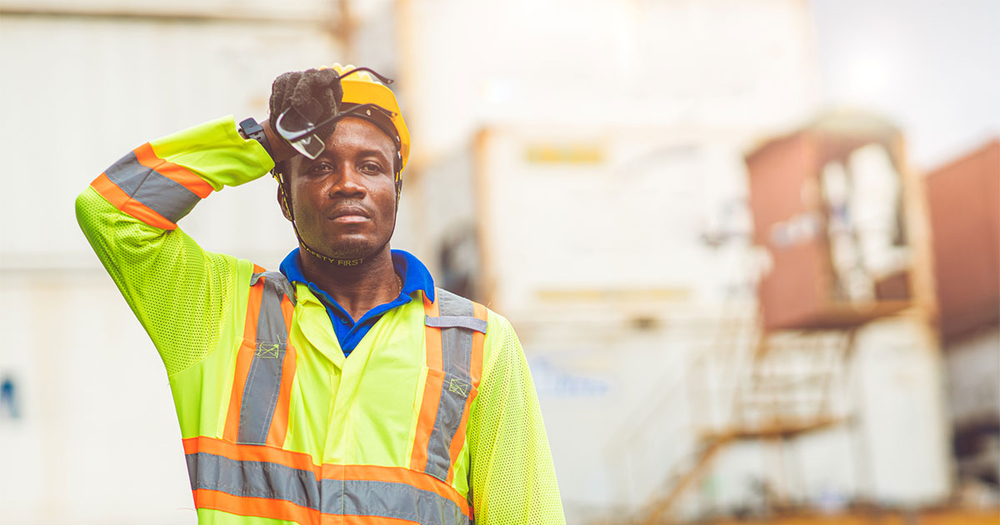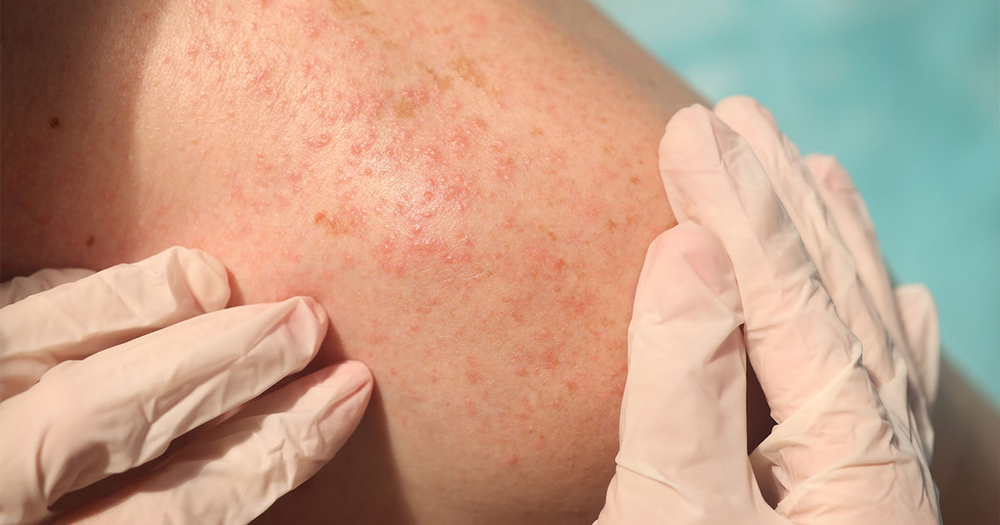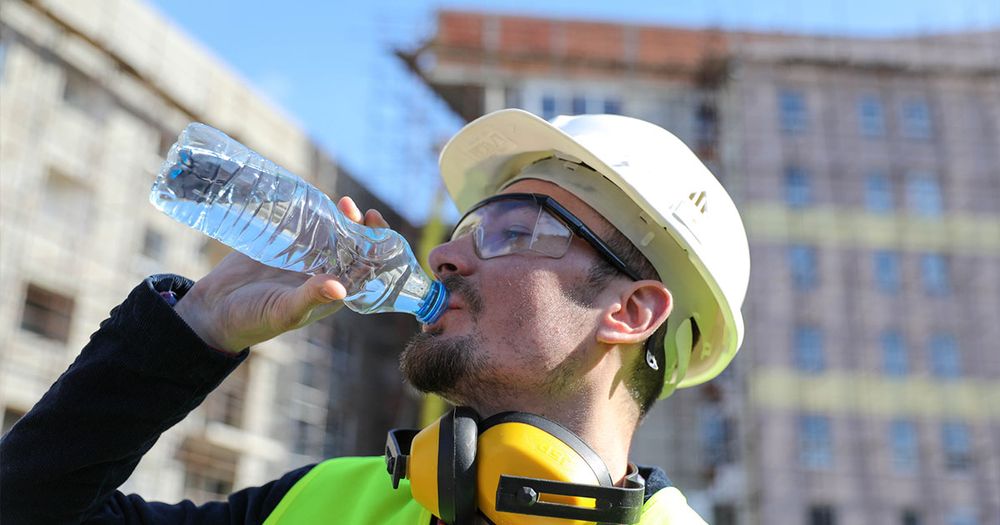
Workers who are exposed to intense heat while on the job are at risk of heat stress. Heat stress includes a series of conditions where the body is under stress from overheating. This includes heat-related illnesses such as heat exhaustion, heat cramps, heat rashes, and heat strokes.
Working in hot environments can also increase the risk of work-related injuries. Hot surfaces can cause incidental burns. Sweaty hands and general exhaustion can make workers more likely to drop things and make mistakes, compromising their safety and health.
Any workers who are outdoors in hot environments are at risk. This includes farmers, construction workers, bakers, miners, firefighters, boiler room workers, and factory workers.
Some workers may be at special risk in extreme heat due to their health status. These groups include those who are 65 years of age or older, overweight, have heart disease or high blood pressure, or take medications that are impacted by extreme heat.
The following types of heat illness may impact workers who are exposed to excessive heat.
Heatstroke occurs when the body’s system for regulating temperature falters and body temperature rises to unsafe levels (greater than 104 degrees Fahrenheit). The signs of heatstroke include confusion, loss of consciousness, and seizures.
If you suspect someone is suffering a heat stroke, contact for help immediately. This is a medical emergency that can result in death. Until medical help arrives, do whatever is possible to keep the person cool. This includes moving them to a shady area, removing their clothing, and wetting them with cool water.
The signs and symptoms of heat exhaustion include headache, nausea, dizziness, weakness, irritability, confusion, thirst, heavy sweating, and a body temperature greater than 100.4 degrees Fahrenheit.
In the event of these symptoms, workers should be removed from hot areas and moved to a cool area where they can relax. Once they have been removed, they should drink liquids and be given cold compresses for their head.
It is wise for workers with symptoms of heat exhaustion to go to a health clinic or the emergency room. Heat exhaustion is a serious health problem and must be monitored in case the symptoms get worse.
Heat Cramps
Heat cramps are muscle pains that are caused by the loss of fluid and body salts during sweating. In the event of a heat cramp, it is important to drink water and/or sports drinks every 15 minutes to replace the fluid loss.
Heat rash is the most common problem in hot work environments. When a worker experiences excessive heat and sweating, they may find a red cluster of pimples and blisters on their skin. Common places for a heat rash include the neck, upper chest, groin, under the breasts, and elbow creases.

The best treatment is to provide a cooler and less humid work environment. The powder may be applied to increase comfort, but ointments and creams should not be applied to the heat rash. The rash should be kept dry. Anything that makes the skin more moist or warm may make the rash worse.
To summarize, keep an eye out for the following symptoms of heat illness. In the event of one of these symptoms, make an educated guess about the possible heat illness, and take the appropriate response measures.
It is important that in the event of heat stress, workers receive adequate resources to make a full recovery. However, emergency response is only half of the necessary work. Heal illness prevention is just as important to protect worker safety.
In order to provide adequate heat illness prevention, employers may need to acquire the necessary tools that will help workers stay cool. See the following strategies, and their accompanying tools, in order to protect workers from excessive heat.
Workers with high heat exposure are likely to lose water through sweating. In order to keep pace, it is important that they are given regular breaks to drink water and stay hydrated.

When working in hot environments, liquids will quickly warm. The Gatorade 48-quart ice chest features high-quality thermal retention that helps keep drinks cool for long periods. This device, featuring side swing handles for easy carrying, is easy to clean and holds 25-36 drinks at a time.
Alternatively, the case can be filled with water and then consumed using 6oz cone paper cups. For $85.00, you can purchase 2400 cups.
At $83.61, you and the other outdoor workers will be grateful to have made this investment in the ice chest. Providing access to cool water is not only a good way to keep workers comfortable. It is an effective way to make drinking water more pleasurable, and thus encourage workers to stay hydrated.
Another option to help stay hydrated while working is the SECO Hydration Pack. This pack holds 2.5 liters of water in a backpack-like structure and allows the worker to drink on the job. Each pack can be purchased for $53.00.
It is not just water that keeps people hydrated. Salts and electrolytes are also important to consume at a similar rate as water. Gatorade Single Serve Powder Sticks can easily be carried to the worksite. When it is time to drink, the powder can be mixed into a bottle of standard drinking water, making for a Gatorade drink that helps replace what was sweated out. A pack of 10 can be purchased for just $5.18.
The clothing that workers wear goes a long way in fighting off the heat. This can take the form of clothing that provides good ventilation, protects the skin, and absorbs excessive sweat.
The Kishigo Brisk Cooling Vest comes with special evaporative cooling technology. The fabrics and fibers create an advanced water management system called ‘HyperKewl’. HyperKewl absorbs, stores, and releases water within the multi-layered structure. The fabrics cool themselves through evaporation, resulting in a cooling effect.
If users soak in water before work, then the cooling effect will last for 5-10 hours. Users can expect evaporative cooling to provide temperatures 15-20 degrees cooler than the ambient temperature. At $47.50, this is an affordable option, especially considering its impact on protecting occupational safety.
A host of materials can help protect workers from the sun’s rays. Buff CoolNet UV+ Reflective Multifunctional Headwear can be worn in twelve different ways - from cap to balaclava, neck gaiter to hair tie - depending on the needs and fit of the user. The fiber is both cooling and stretchy, and is recommended by The Skin Cancer Foundation. Each piece of headwear can be purchased for $26.00.
Other options to keep the head cool include the HexArmor ColdRush Bandana, the HexArmor ColdRush Du Rag, and the Kishigo Brisk Cooling Bandana. These range in price from $5 to $15, and all feature cooling material that is designed to last for long workdays. Those that need a hard hat for their work can consider a HexArmor ColdRush Hard HatInsert at $12.50.
Sun protection is important as well. Simply blocking the rays from making direct contact with the worker’s skin can prevent heat rashes and overheat. The Kishigo Full Brim Sun Shield is designed to fit over full brim hard hards. A six-pack can be purchased for $85.00. For a cheaper option, consider the OccuNomix MiraCool Neck Shade at just $2.50 per unit. Finally, the Kishigo Safari Hat, Full Brim offers shade both on the neck and for the user’s eyes, making it a useful option on sunny days. It can be purchased for $15.50.
Sometimes, the best way to prevent heat-related illness is to reduce the amount of activity. There are precautions that can be taken for jobs that include intense physical demands, but the most foolproof way to protect occupational safety and health in the heat is to scale back on the amount of physical activity.
This can be accomplished through taking rest breaks, working at a slower pace, or working fewer hours. The Pyramex Blue Cooling Towel is a good option for keeping cool while on break.
Heat stress has serious health effects. It can lead to diminished job performance, health effects that last for days, and in worst-case scenarios, death. For this reason, it is vital that employers provide their workers with easy access to all the resources that will reduce exposure to the heat and keep them cool.
Investing in the proper clothing and hydration supplies is the easiest way to accomplish this. If you are unsure about what constitutes proper safety and health guidelines, the best thing to do is seek additional information. You will be glad to have protected the occupational safety and health of your outdoor workers before an emergency occurs, rather than after.